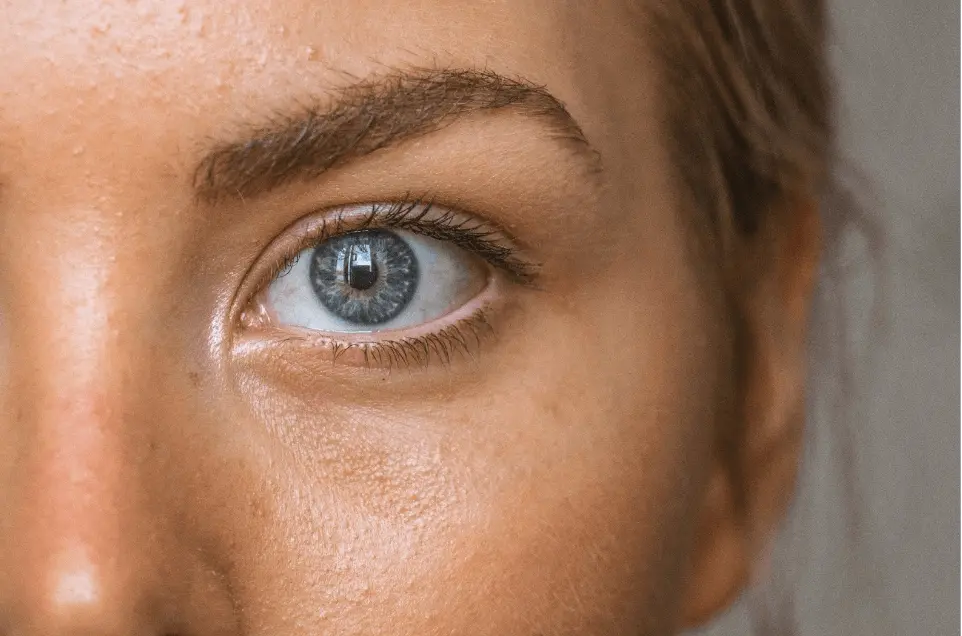Corneal Collagen Cross-Linking Surgery: A Solution for Keratoconus and Its Relationship with SMILE LASIK Surgery
Vision correction has seen remarkable advancements in recent years, offering various solutions for different eye conditions. Among these, corneal collagen...

Vision correction has seen remarkable advancements in recent years, offering various solutions for different eye conditions. Among these, corneal collagen cross-linking surgery has become a revolutionary treatment for keratoconus, a progressive eye disorder that leads to corneal thinning and distortion. On the other hand, SMILE LASIK surgery is a cutting-edge laser vision correction technique designed for patients with refractive errors such as myopia and astigmatism.
Many patients wonder about the relationship between these two procedures—whether they complement each other or serve different purposes. This article explores corneal collagen cross-linking surgery, its benefits for keratoconus patients, and how it relates to SMILE LASIK surgery as a vision correction method.
Understanding Corneal Collagen Cross-Linking Surgery

What Is Corneal Collagen Cross-Linking Surgery?
Corneal collagen cross-linking surgery (CXL) is a minimally invasive procedure used to strengthen and stabilize the cornea in patients with keratoconus and other corneal weakening disorders. The process involves applying riboflavin (vitamin B2) eye drops to the cornea, which is then activated by ultraviolet (UV) light to strengthen the collagen fibers in the corneal structure.
Who Needs Corneal Collagen Cross-Linking Surgery?
This procedure is recommended for individuals who:
Have progressive keratoconus, where the cornea becomes thinner and more conical over time
Are at risk of severe vision loss due to corneal instability
Want to avoid corneal transplants in the future
Have corneal ectasia, a condition similar to keratoconus that occurs after refractive surgery
The Corneal Collagen Cross-Linking Surgery Procedure
Pre-Procedure Assessment: The ophthalmologist examines the corneal thickness and overall eye health.
Application of Riboflavin Drops: The cornea is soaked in vitamin B2 eye drops for approximately 30 minutes.
UV Light Activation: A special UV light is applied to the cornea for another 30 minutes to activate the riboflavin and enhance collagen cross-links.
Recovery Phase: Patients wear a protective bandage contact lens and follow a post-procedure care plan to ensure smooth healing.
Benefits of Corneal Collagen Cross-Linking Surgery
Strengthens and stabilizes the cornea, preventing further deterioration
Reduces the risk of corneal transplant surgery
Slows or halts the progression of keratoconus
Non-invasive and effective with minimal downtime
Can be combined with other vision correction procedures, such as specialty contact lenses or ICLs
Potential Risks and Side Effects
While corneal collagen cross-linking surgery is generally safe, some potential side effects include:
Temporary vision blurriness or light sensitivity
Dry eyes and irritation for a few weeks post-surgery
Delayed healing in rare cases
Understanding SMILE LASIK Surgery

What Is SMILE LASIK Surgery?
SMILE LASIK surgery (Small Incision Lenticule Extraction) is a modern laser vision correction procedure used to treat myopia (nearsightedness) and mild astigmatism. Unlike traditional LASIK, which involves creating a flap in the cornea, SMILE LASIK surgery corrects vision through a small incision, reducing the risk of complications and enhancing recovery.
Who Is a Candidate for SMILE LASIK Surgery?
SMILE LASIK surgery is ideal for individuals who:
Have mild to moderate myopia (-1.00D to -10.00D)
Have healthy corneas with sufficient thickness
Do not suffer from keratoconus or corneal thinning disorders
Want a minimally invasive laser eye surgery with faster healing
The SMILE LASIK Surgery Procedure
Initial Eye Examination: The surgeon assesses eye health and corneal thickness.
Laser Treatment: A femtosecond laser creates a small disc-shaped tissue (lenticule) inside the cornea.
Lenticule Removal: The surgeon removes the lenticule through a 2-4 mm micro-incision, reshaping the cornea.
Healing Process: The small incision heals naturally, and patients regain clear vision within days.
Benefits of SMILE LASIK Surgery
Minimally invasive, with no corneal flap required
Faster recovery and lower risk of dry eyes compared to LASIK
Ideal for active individuals, reducing complications related to eye injuries
Stable, long-term vision correction
Potential Risks and Side Effects
While SMILE LASIK surgery is highly effective, some risks include:
Temporary vision fluctuations during healing
Dry eyes for a few weeks post-surgery
Not suitable for thin corneas or keratoconus patients
How Corneal Collagen Cross-Linking Surgery and SMILE LASIK Surgery Relate to Each Other
Can Patients with Keratoconus Undergo SMILE LASIK Surgery?
Patients diagnosed with keratoconus or corneal thinning disorders are generally not eligible for SMILE LASIK surgery. Since SMILE LASIK surgery requires a stable and healthy cornea, individuals with progressive keratoconus would experience worsened vision if they underwent the procedure.
Can Corneal Collagen Cross-Linking Surgery Make Someone Eligible for SMILE LASIK Surgery?
Unfortunately, corneal collagen cross-linking surgery does not restore corneal thickness enough to make a patient eligible for SMILE LASIK surgery. However, for some individuals with mild keratoconus who achieve corneal stability after corneal collagen cross-linking surgery, other vision correction options such as implantable contact lenses (ICLs) or PRK (photorefractive keratectomy) may be considered.
Alternative Vision Correction Options for Keratoconus Patients
Since SMILE LASIK surgery is not suitable for keratoconus patients, the following alternatives may be recommended:
Specialty Contact Lenses – Scleral lenses or rigid gas-permeable (RGP) lenses provide improved vision.
Implantable Collamer Lenses (ICLs) – Artificial lenses inserted inside the eye for long-term correction.
PRK Surgery – A surface laser procedure that reshapes the cornea without a flap.
Conclusion
Whether you need corneal collagen cross-linking surgery to treat keratoconus or are considering SMILE LASIK surgery for refractive error correction, professional guidance is crucial for making the right choice.
At Clear View Eyes, our expert ophthalmologists specialize in advanced corneal collagen cross-linking surgery and vision correction solutions tailored to your needs. They prioritize patient safety and long-term vision stability, ensuring that every procedure is carefully planned and executed with precision.
If you’re unsure about which vision correction option is best for you, schedule a consultation with Clear View Eyes today. Let us help you achieve clearer, healthier vision with the latest advancements in eye care!



